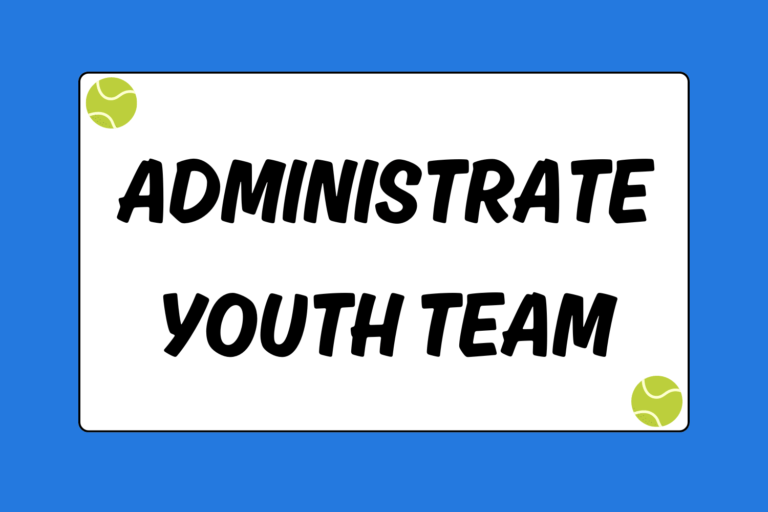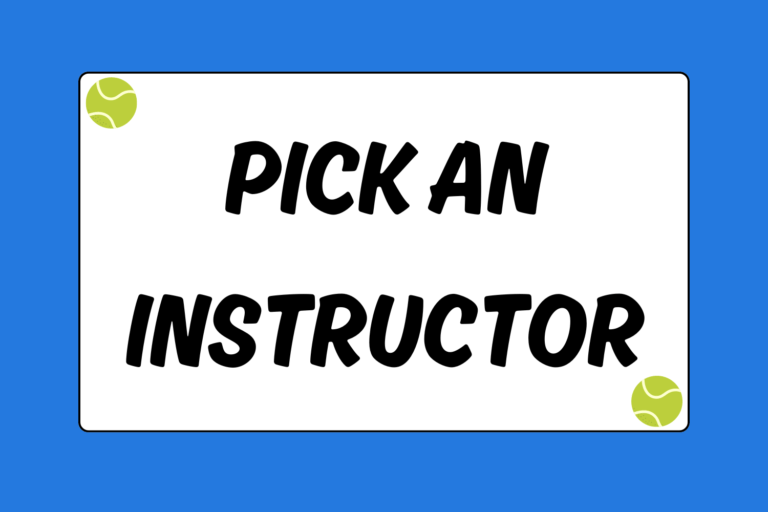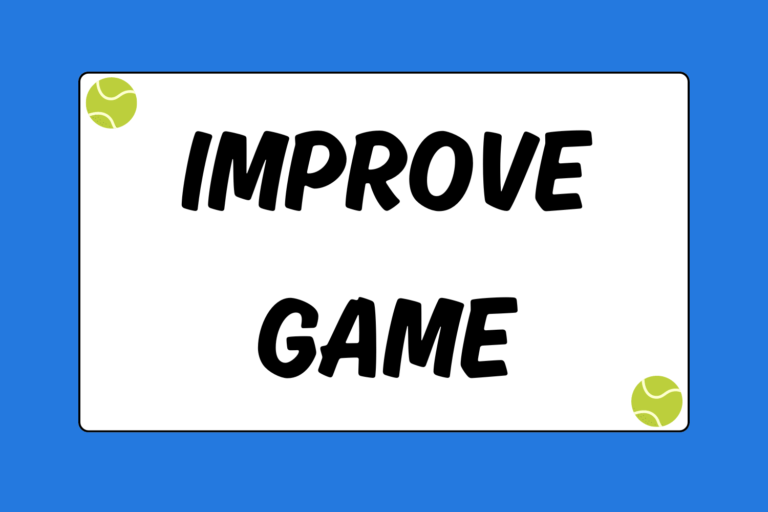Tennis players tend to focus on the offensive aspects of the game, but to be the best, you must also be comfortable defending the court. Roger Federer and Rafael Nadal are two prime examples of players who start with an offensive game, but can also effectively use defense to get back into a point.
But good defensive play does not happen overnight—it takes determination, practice, a bit of stubbornness, and a never-say-die attitude. This guide examines the three major components needed to develop and improve defensive game: Anticipation, footwork and speed, and shot selection.
Anticipation
Tennis would be easy to master if you always knew where your opponent was going to hit the ball. Sadly, telepathy has not yet been marketed to the mainstream tennis circuit, and until that day, some combination of calculated prediction and an educated guesswork will have to do. Anticipating where your opponent is going to hit the ball is an essential skill to have or to develop for good defensive players.
Here are some tips and other things to consider during a point that will help you improve your anticipation skills.
- Follow your instincts. As an intermediate level player you most likely already have some sort of intuition for making decisions on the court. So keep doing what you’re doing—just make sure you don’t second guess yourself.
- Be aware of court position. You must know where you and your opponent are on the court at all times. Generally speaking, the closer a player is to the baseline, the more offensively they can play. If you find yourself 8 to 10 feet behind the baseline, move to a more defensive strategy or play a ball that buys you some time to get back to the baseline. Remember that your opponent will probably be adjusting similarly.
- Learn from your opponent during the warm up. Take note of what they do well, where they struggle, and whether they prefer to hit cross court or down the line. Tennis players are creatures of habit and any information you gather during warm up will help to anticipate the opponent’s game-time play.
- Be aware of how the balls are being hit. Did you hit a ball too short? Did you get enough angle to push your opponent off the court? Understanding the type of shots both you and your opponent hit during a point will help to anticipate the type of ball that will be played in return.
- What side did you hit the ball to? The return shot will largely be determined by whether you hit a shot to the opponent’s forehand or backhand. If an opponent is weak on the backhand, anticipate a slower shot from that side. If you play to their forehand, be prepared for a strong offensive shot.
- Look at your opponent’s racquet. The angle of their racquet will help you predict the projection of the ball.
The more aware you are during each point, the more accurately you will be able to predict your opponent’s next move. Focus during the warm up and take mental notes on your opponent to finely develop your anticipation skills which can be used to improve your defensive game, even if you lack the speed or agility described below.
Footwork and Speed
Being fast does not automatically make you a great player, but with the right footwork, anticipation skills, and shot selection, speed can be used as a weapon for a successful defensive game—it forces an opponent to take greater risks, which in turn leads to more errors. Two of the fastest professional players, Michael Chang and Lleyton Hewitt, are known for pressuring their opponents to hit bigger shots than they are used to, and many of their wins can be attributed to their superior foot-speed.
Certain players are naturally faster than others, but the best way to improve speed is to practice sprint training and follow a regular drill routine.
If you do sprint work, remember to also work on stopping. The combination of sprinting and stopping make up the most used movements in tennis. Here are some examples of what you can practice in order to develop your sprinting and stopping ability.
- Court “suicides” are a fantastic way to improve both sprinting and stopping.
- If you have access to a track, and have some resistance gear (such as a chute, or sled), you have the equipment necessary to improve your sprinting. Attach the chute or sled to your back, and run some sprints, leaving 30 second intervals between sprints. Sprint for 100 meters, then stop, rest, and repeat.
Adding drills to a training routine is a great way to improve your side-to-side (referred to as “lateral movement”) or forward-and-backward mobility. Focus on drills that highlight your weaknesses.
- The easiest way to practice lateral movement is to have a friend or instructor feed you balls that move you from side to side along the baseline. Alternating feeds to the forehand and backhand sides will force you to move quickly along the base line.
- In order to improve forward and backward mobility, have a friend or instructor feed you balls with varying depth. Feed some balls that land short in the court, and also balls that land deep in the court. In order to get in the proper location to hit the ball, the player will be forced to move both forward and backwards.
Tightening up your footwork and foot speed will make you a faster overall player, which in turn helps you cover more hits and turn a defensive position into an offensive position. The faster you get to the ball, the more time you have to set up your stroke, and the better chance you have of getting back in the point.
Shot Selection
A player’s shot selection refers to type of ball they choose to play under varying situations. When in the defensive position on the court, the goal of the next shot should be to get you back into the point and to improve your court position—not to win the play with a single stroke. This section examines different defensive scenarios and the different shot options that will help you get back into play:
- Pulled off of the court: Play a ball that will give you more time to recover to the center of the court
- Use topspin and high net clearance. A ball played with lots of topspin and high net clearance will give you some time to return to the center.
- Slice the ball. If the shot stays low, it will be easier to hit a slice than to hit a flat or topspin shot.
- Aim cross-court. The longer travel distance will give you more time to recover.
- Opponent hits a great approach shot and is coming to net
- Shorten your swing. There is no time for a big, loopy swing.
- Look to lob your opponent. This will buy you some time to recover back to the center of the court and also force your opponent to hit one more ball.
- Make your opponent hit a volley. Just returning the ball back into play increases your chances of getting back into the point.
- Try slicing or hitting a chip with very little pace. This is a difficult ball for players of all levels to handle.
- Hit a short, cross-court angle passing shot with a lot of topspin. Aim to hit a ball that lands in the service box and ends outside of the doubles alley.
- Being overpowered from the baseline
- Do not try and match power with power. Players who hit with a lot of speed love opponents who try to out-hit them—because it usually never works.
- Try mixing up your shot and spin selection. Take some pace off of your shots. Try instead to hit with topspin and slice and make your opponent generate the pace.
- Keep the balls deep. If your opponent tries to hit winners from deep positions, he or she is likely to generate more errors.
- Keep the same direction of the ball. It is easier to redirect a hard-hitting opponent’s shots if you do not change the direction of the ball. If he or she is hitting cross-court, try and return their shots back cross-court or vice versa for the down-the-line shots, and only change the direction of the ball when you have the time or the opening to do so.
- Keep your opponent guessing. Never play the same shots over and over again. Players who hit hard love to be in a zone, so try and mix up shots that produce varying heights (such as a slice that stays low, or a topspin shot that bounces up high).
Remember the Basics
There are a few basic rules of good defense to keep in mind, no matter how fast or quick you are on your feet.
- Always try to and move back to the middle of the court. By returning to center, you set yourself up to transition from defense to offense, while still limiting the amount of running.
- Remember to use the split step. The split step is the short one-to-two inch jump a good defender performs before the opponent gets ready to hit the ball. Make sure you land on your toes and not your heels, which will better prepare the body for a quick change in direction or movement.
- Knowing when to commit to a side. A good defensive player always avoids committing to one side of the court too early. A skillful opponent will always notice your position on the court and most likely respond with a quick shot to the opposite side, so it is important to remain neutral until the direction of play is clear.
Defense Wins Matches
Playing it safe when in a defensive position is a better strategy than trying to make the highlight reels. The player who makes the fewest mistakes generally wins more matches and if you can force your opponent to hit one more ball, that is one more opportunity for him or her to make a mistake. Play the percentages and improve your defensive skills, because while it may not always make for the most glamorous or exciting plays, it will win matches.





